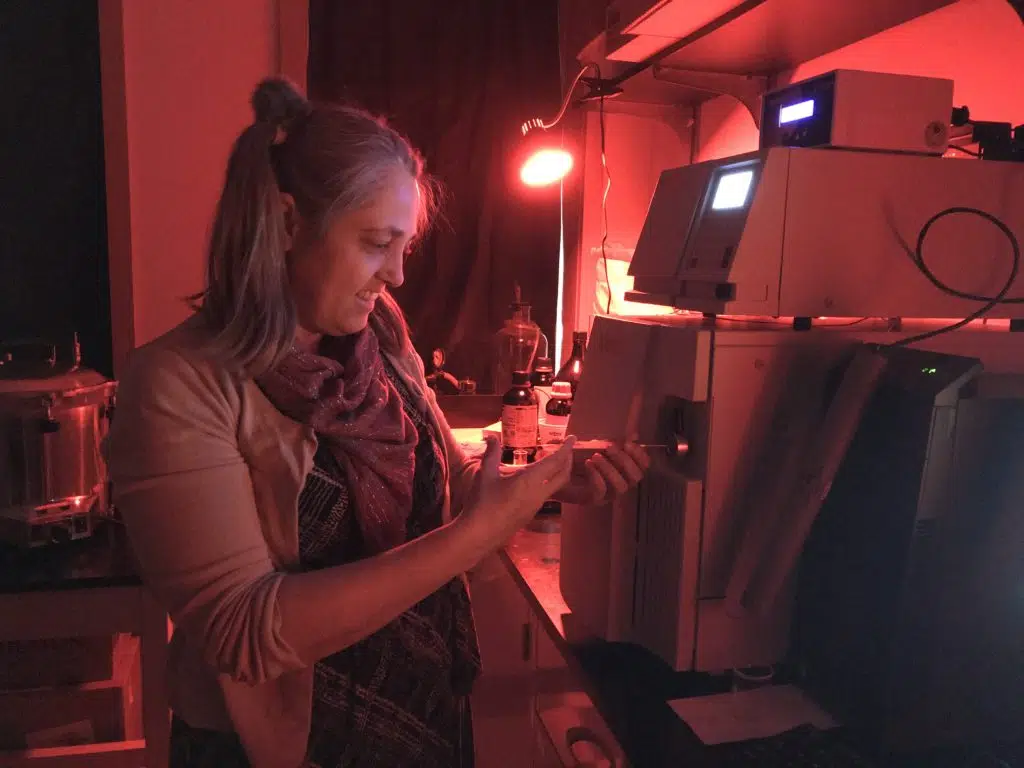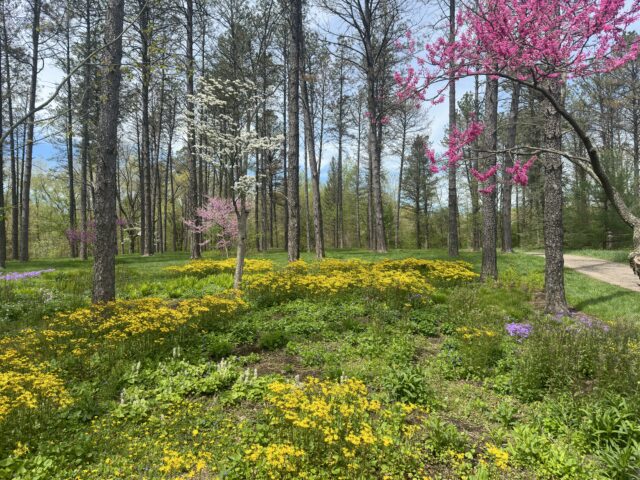
We’ve all heard the story; a famous scientist is asked how they got interested in their subject area and they say something like “I’ve always loved sea otters and wanted to be a marine biologist ever since I was a little boy”. This common storyline is part of why scientific skills are viewed as inherent, people either ARE scientists, or they ARE NOT.
Contrast that with my story; when asked how I got interested in plant physiology, I say “I was a theater kid, never even thought one thought about plants or science until I was in my late 20’s. After I had dropped out of my undergraduate program and became a mother, I grew a vegetable garden for the first time as entertainment for my son, which was my first experience with plants. This experience drove me to return to finish my undergraduate degree in plants, where I then fell completely in love with plant physiology research” In fact, my becoming a scientist was a complete surprise to myself and everyone who knows me.
So how did someone like me, someone who clearly wasn’t born with science bones in their body, how did I become a research scientist? To this day, I’m still a theater kid at heart, and while I’ve learned to embrace my creativity as a strength in science, I’ve also had to develop skills like attention to detail, mathematics and computer coding, none of which comes naturally to me.
In fact, I was not born a scientist, I became a scientist through training. LOTS of training. Here’s a look at the different elements that came together to craft me, a creative person with a passion for asking questions, into a fully-fledged scientist.

Undergraduate degree. The undergraduate degree is the foundation of all professional careers, including science. My career path is proof that you can retrofit science into your undergrad at any point, and a little secret, you don’t even have to have a science undergraduate degree to go into a STEM career. My mom is a great example, as she had a bachelor’s degree in German and followed that up with a master’s in computer science, leading to a successful career focused on machine translation. In fact, the “non-science” skills she honed as an undergrad were just as important in her scientific career as those classic things we think of as scientific skills, like math and physics. With so much of science being interdisciplinary these days, what I know now is that the most important thing is to home in on your own strengths, and doggedly pursue opportunities to apply those strengths in different contexts.
Undergraduate internships (for-credit, volunteer or paid). Most colleges and universities have independent study courses or honors courses where you can get credit toward your degree to get some research experience. Nowadays, most STEM students will seek out a paid internship, as this can give you a real look at the JOB of science. Student interns are typically assigned part of a larger research project, and they learn how to take measurements, analyze data, and present their results. These internships are helpful in a science career because it gives a chance to find out if you like the day-to-day work of research. I took on undergraduate research internships more out of curiosity than anything else, because even after getting my science undergraduate degree I didn’t see myself as on a path to becoming a scientist, honestly, I didn’t think I was smart enough, I didn’t have “science genes”. Much to my surprise, during my internships I learned that the day-to-day of science relies very little on your smarts, and it is not filled with “Eureka” moments like you see in movies and documentaries, it’s really just work, nitty gritty, repetitive work.
Master’s degree. After doing one for-credit independent study at my university and one paid internship at the New York Botanical Garden, I gained confidence that I enjoyed and was capable to do the work of science, and the next step that many people take is doing a master’s degree. This experience involves formulating a project, conducting the experiment, and then writing it up. It was fun, but I won’t lie it was also hard. It pushed me to learn new skills, I had to dig deep to find my strengths and learn how to shore up my weaknesses. Through the master’s degree, students learn if they have the constitution for research: Can you push past disappointment? Can you stick rabidly to a problem, refusing to let it get the better of you? Can you keep organized enough that you know exactly what you did with that sample that you took 3 years ago? Will the joy of finally seeing your hard-won data set displayed in a fancy graph be enough to offset the heartache of “major revisions” on your paper? The qualities that make up a scientist are not brains and pontification, they are late nights and early mornings, the ability to show up for myself when no one else was watching, that’s what I learned in my master’s training.
PhD. As I was finishing my master’s degree, my advisor invited me to apply for the PhD program. “What, me, a PhD?”, I said in my head. I felt like I was having fun doing science-y stuff, but could he think I might actually be good at this? In fact, I started my PhD with no illusions that I would become a scientist, I had just had SO MUCH fun in my master’s program, and I didn’t want it to end. It turns out a PhD is really just three master’s degrees crammed together, so I knew I could do the work, I knew it would be hard but fun, and decided to go for it. At the time I thought this made me a fake PhD student, a poser. In hindsight, I now know that this was entirely the most abundantly correct reason to go for the PhD, if you love making project plans and executing them, if your brain enjoys chewing on problems about how leaves work, you’re probably a great fit for plant science. The fact that I was not heading toward a career with my PhD did not hit me until I was about to graduate, and as I again saw a job I really enjoyed coming to an abrupt end, I rushed to find another option that would keep me doing the work I loved.
Postdoctoral Researcher. The “last” step in becoming a scientist is to take on a postdoctoral position, which is essentially like a residency for a medical doctor. The postdoc is where you start to work more with other scientists as a collaborator, rather than a student. Postdocs get more responsibilities, and they are expected to produce research products quickly so that they can move on to their first professional appointment. It’s like that moment when the butterfly emerges from the cocoon and its wings are still wet, you can feel the wind but you need a little more time before you’re ready for lift-off. Generally, these positions will last anywhere from 2-5 years, but people often do more than one postdoc position because finding a job as a scientist is pretty difficult, so the postdoc is a safe place where you can keep your training fresh while you hold out for a job.
That was my training, it took 16 years from the day I returned to complete my undergraduate degree to the day I got my Plant Scientist job at Holden. So, are scientists born? Maybe, some of them. But I think more often than not, scientists are made, as I was, through training. Now when a stranger finds out I’m a scientist and they say, “wow you must be smart”, I laugh and say, “or just a glutton for punishment”. Nowadays I do feel like a REAL scientist, but I’m still just playing with science equipment and making graphs, as I have been trained to do. My experience shows that not all scientists are born with science in their cells, and I would argue that the stereotype is doing us a disservice. When we think about steps we can take toward building a more diverse, equitable and inclusive STEM workforce, we could go a long way by embracing science as a learned skill, rather than as an inherent quality.

Juliana S. Medeiros, PhD
Plant Biologist
My research focuses on plant anatomical and physiological acclimation and adaptations to the abiotic environment. I am interested in how phenotypic and genetic variation in plant form and function interact with variation in climate over space and time to drive ecological patterns and the evolution of plant diversity. I focus primarily on plant hydraulic traits, including xylem water transport, leaf gas exchange and the integration of leaf and xylem function. Click here to learn more about research in my lab: Medeiros Lab Webpage











